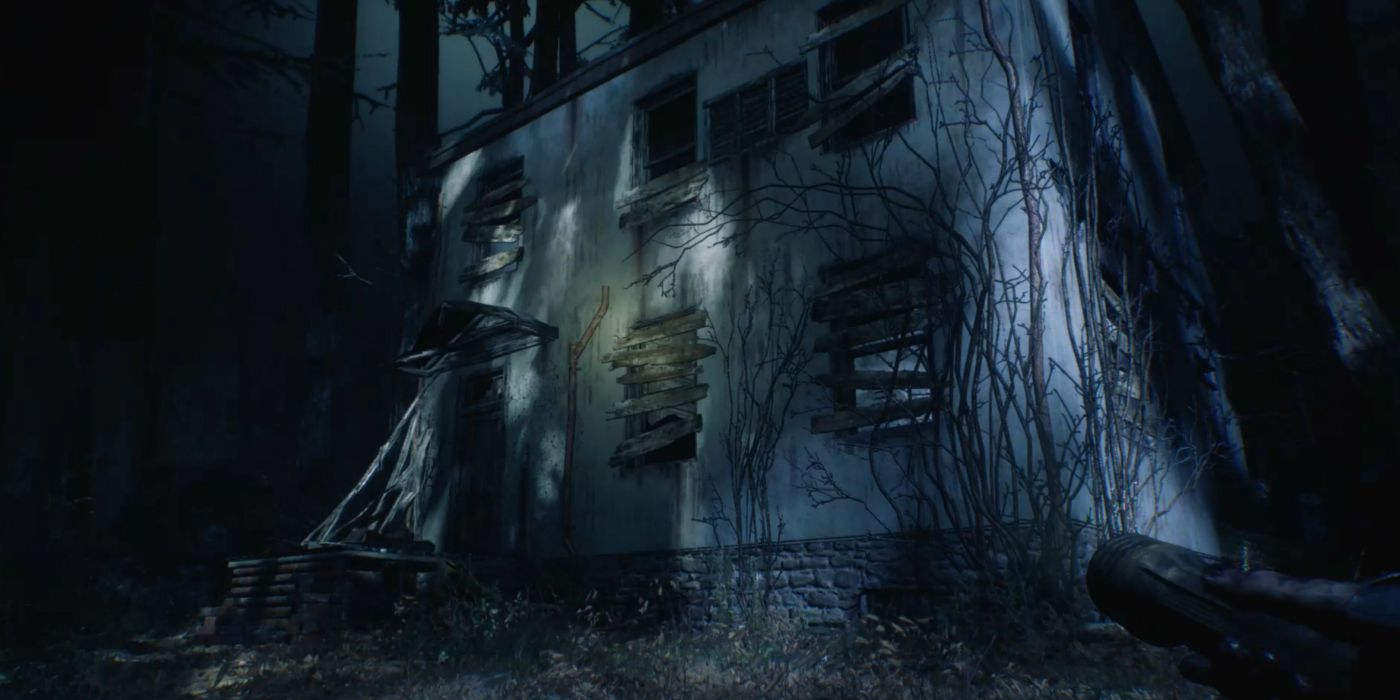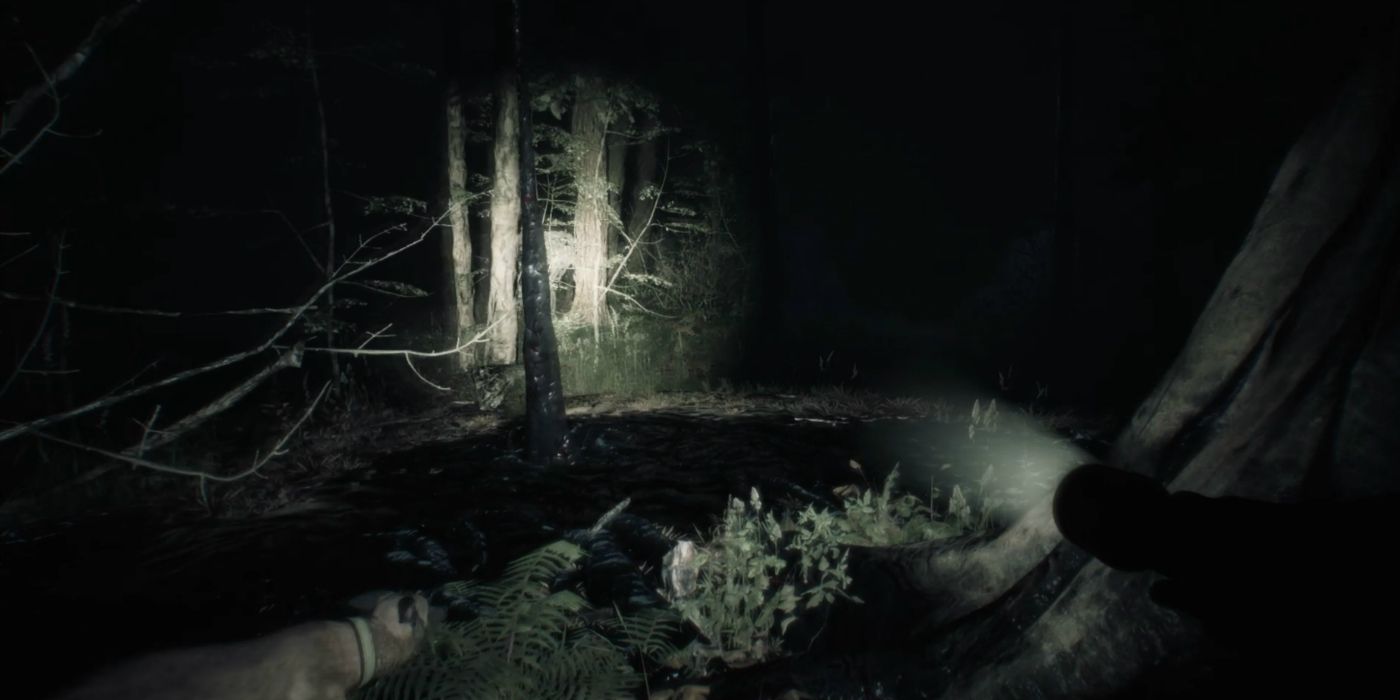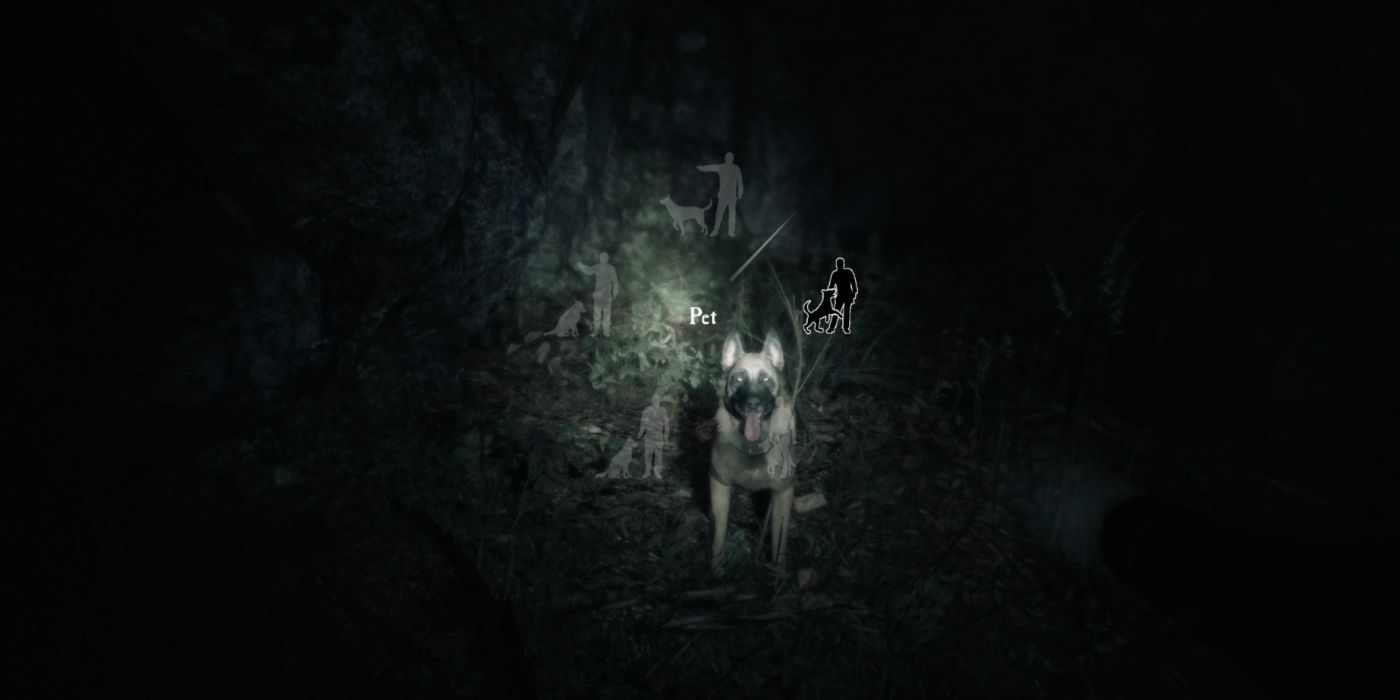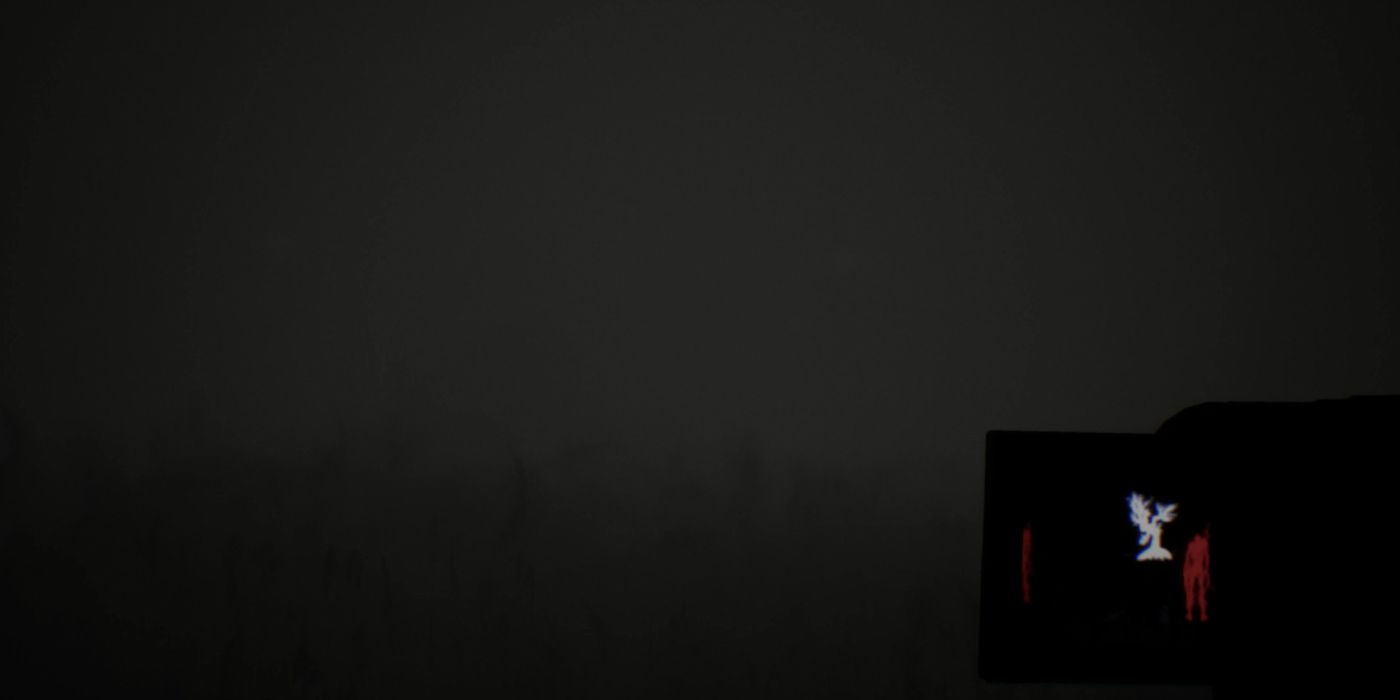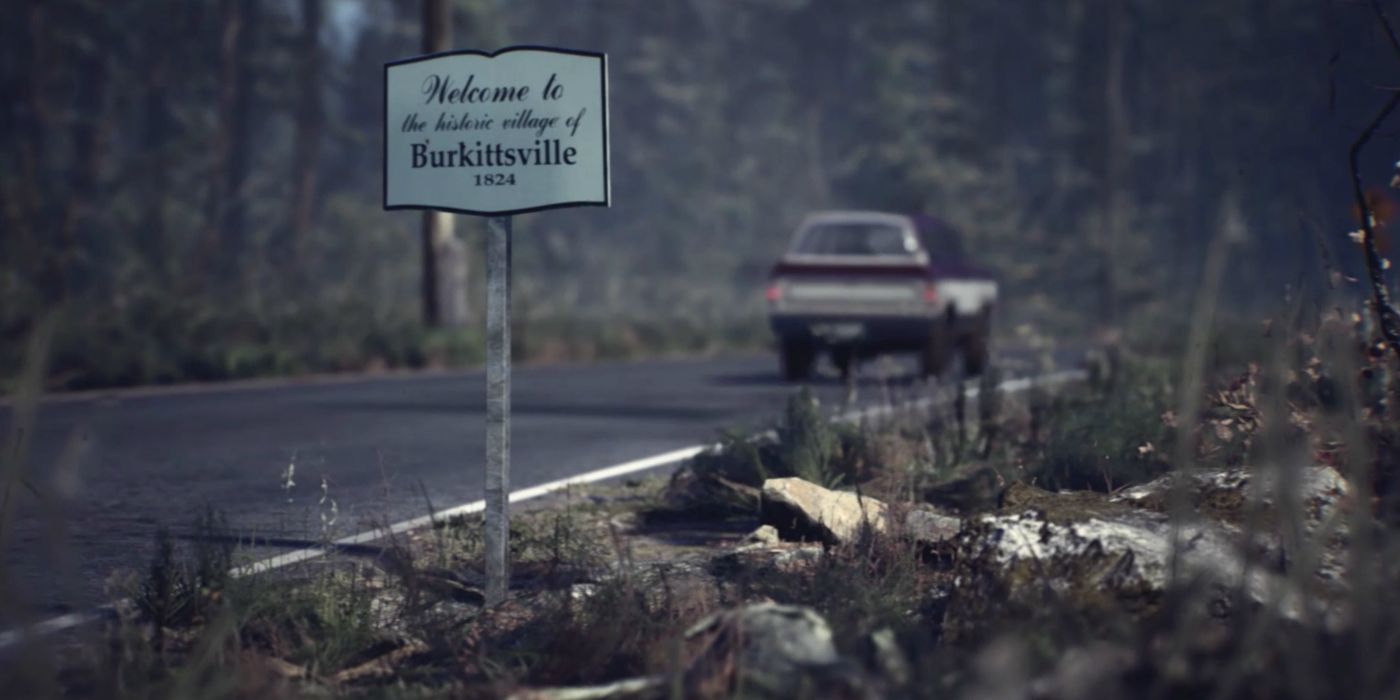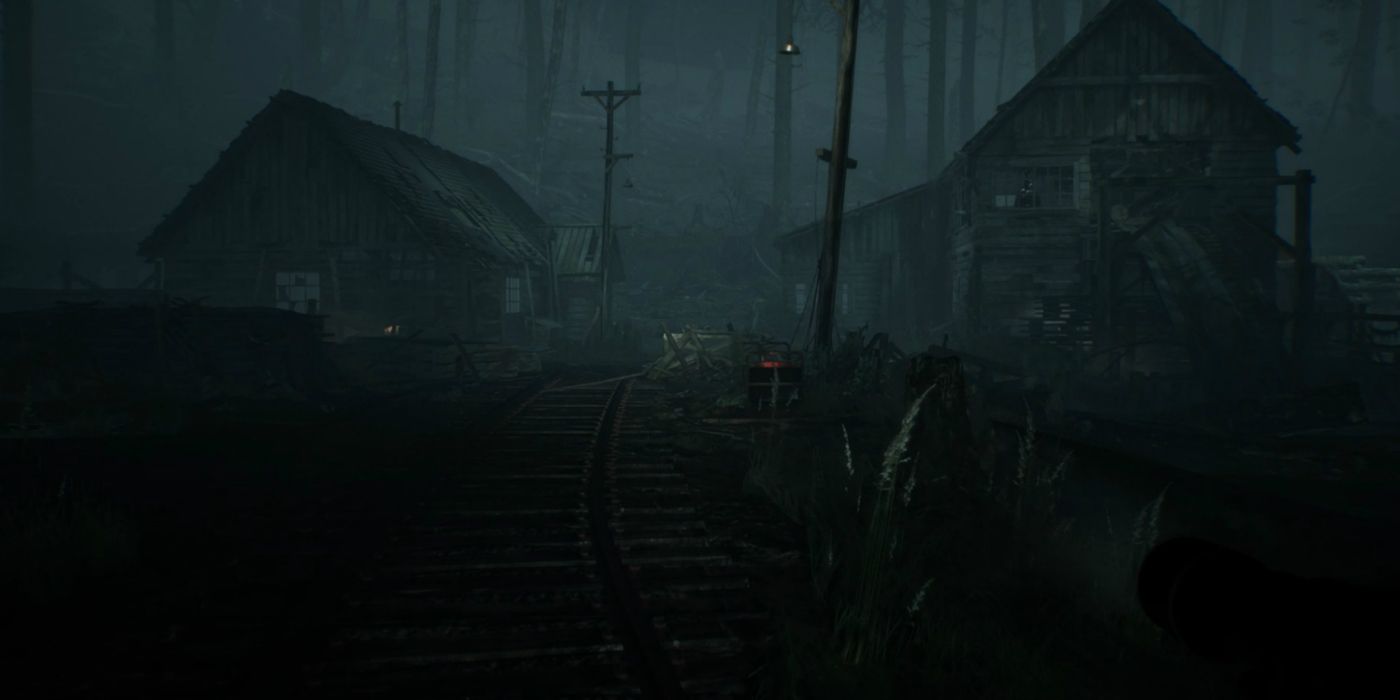Bloober Team's Blair Witch game sequel to 1999's The Blair Witch Project introduces an inventive combination of gameplay mechanics and a spooky story.
Blair Witch is a far better game than it ever needed to be. Acting as a sequel to the 1999 found footage film The Blair Witch Project and largely ignoring events depicted in the film’s actual sequel, Book of Shadows, Blair Witch effectively translates the themes and iconic moments featured in its source material while adding new and interesting elements that work in tandem with the movie’s core mythology to create inventive gameplay loops.
Developed by Bloober Team, the Polish game company that created past psychological horror titles Observer and the Layers of Fear series, Blair Witch takes place two years after the events of the original movie and sees players stepping into the shoes of Ellis, a man who joins a search party in order to help find a young boy lost in the woods of Burkittsville, Maryland. Accompanying Ellis on his journey is Bullet, his loyal canine companion, as well as an era-appropriate Nokia phone, and, because it wouldn’t be a Blair Witch title without it, a camcorder.
In much the same way that The Blair Witch Project, while not the first found footage movie but undeniably the one that kicked off mass interest in the genre, spawned countless lesser iterations of the same concept over the years, games like Amnesia: The Dark Descent and Slenderman have led to an overabundance of similarly-paced horror titles. While the idea of taking combat out of a game in order to instill a sense of fear and helplessness was once thought of as a novel concept, soon it became clear that many under-skilled developers were simply taking advantage of that fact in order to do less work. A simple search for psychological horror indie titles on Steam will reveal hundreds, if not thousands, of these types of games.
Blair Witch does have combat, but those moments are few and far between, and much more along the lines of Alan Wake than Resident Evil. Instead of a gun Ellis is armed with only his flashlight, which, along with its obvious use, is his only defense against the weird, blurry monsters in the woods. Just as Alan Wake would have to aim his flashlight at enemies in order to defuse their shields, Ellis can point his light at the creatures in order to scare them away. Quick and dangerous, these monsters are hard to spot in the dark, and players must rely on Bullet’s growls to point them in the right direction.
Pointing out enemies isn’t Bullet’s only use. As Ellis’ assigned companion, Bullet acts as a comfort animal, helping to calm the player down when things in the forest get too stressful. He can be fed treats, petted, told to stay close, and scolded. Like Dogmeat in Fallout 4, Bullet can also be instructed to go search for clues or to follow a trail, and can even squeeze into small spaces that Ellis can’t in order to retrieve items. He’s a good boy, and pretty much the only physical contact with a friendly character the player has throughout the entire game.
There are other characters, of course, but in keeping with the fashion of aforementioned psychological horror game tropes most, but not all, of them are relegated to voice-only appearances. Ellis has a walkie-talkie and a cell phone, both of which can be used to communicate with a small pool of people, and while the walkie-talkie is more plot-centered, offering less in the way of free communication, the Nokia allows for the player to call a number of people in Ellis’ address book at any time. Some of these conversations are nothing more than Easter eggs and a little humor, but others reveal bits of Ellis’ backstory.
Blair Witch is that rare licensed game that could easily stand alone as its own product and yet is still elevated by the fact that is has a pre-established history and context for the interactions that take place, and nothing is more indicative of that than the way the camcorder is used. Discovered almost immediately after setting foot in the Burkittsville forest, the camcorder is a secondary field of vision for the player, a way to view past events that move the plot along via cassette tapes, and a tool to manipulate reality.
By finding certain red-backed cassettes, the player can alter the world around them. In its most basic form, an early example sees Ellis discovering a locked door. He searches around a nearby shed and finds a red-backed tape, which he then watches. The tape shows someone entering that doorway, and if the camcorder is paused before the door closes then, in real life, the door will be open. This concept is used multiple times throughout the game in order to solve inventory and progression puzzles, and while none of the situations are terribly complicated to decipher there is still a sense of satisfaction found in altering the world via this method.
Blair Witch is not difficult in the way some horror titles can be, largely due to the lack of combat encounters and the somewhat linear way in which the game progresses. Ellis’ exploration of the Burkittsville woods occurs in chunks, some more open than others, and surrounding these chunks are either topographical barriers, Ellis’ own determination, or good old-fashioned invisible walls. Although the player is at times in danger of taking damage from monsters, death is handled with a quick restart back to the beginning of the combat encounter, with no lives system or permanent failure state.
This is both helpful and harmful. While it would be tedious to have to replay large sections of the game over again after a death, especially in a title like this which offers extended amounts of downtime relegated to walking around and searching for clues, a scary moment when replayed several times in quick secession becomes significantly less scary. This decision, however, leads back into one of the game’s main themes: inescapable loops.
It’s clear that Bloober Team is infatuated by the cancelled P.T. project that Death Stranding director Hideo Kojima created. Layers of Fear was heavily influenced by the reaction to that Silent Hills playable teaser, and Blair Witch feels like both a spiritual sequel and the logical progression of the looping horror concept the demo emphasized, especially in the latter half of the game where many of the actions and ideas a player may have developed get twisted and inverted. Enemies that were once afraid of the light now run towards it, forcing Ellis to turn his back on the monsters and instead use his camcorder to follow some hidden trail to safety. A special mention should be made of the sound design as well, much of which feels lifted straight from the original movie.
To say much more is to spoil what in the end is a fantastic seven-hour experience, longer if a player wants to see all the alternate endings. Although many mechanics featured here are copied in one way or another from other horror titles, the particular arrangement and combination Bloober Team decided on elevates the game higher than any one concept stands by itself. As a sequel to one of the best found footage movies of all time, one that came out 20 years ago at that, Blair Witch is far better than it had any right to be. Also, you can play old-school Snake and a Space Invaders-style shooter on the in-game Nokia phone. That’s three games for the price of one.
Blair Witch is out now for the Xbox One and PC. A Steam code was supplied to Screen Rant for the purposes of this review.

